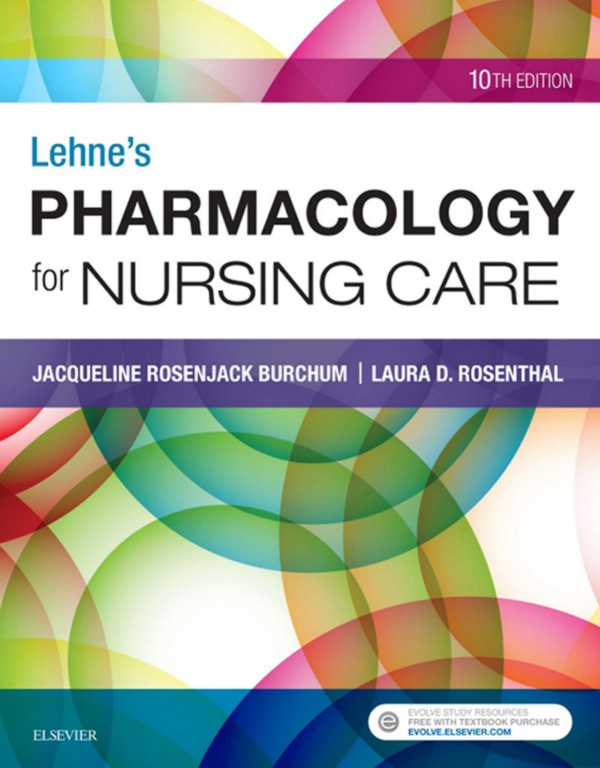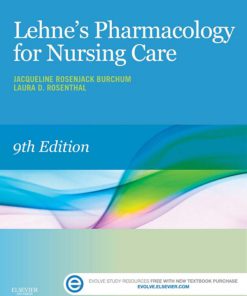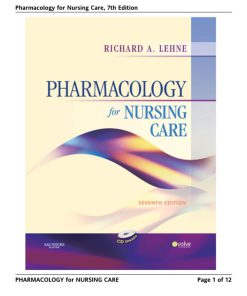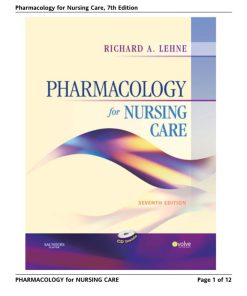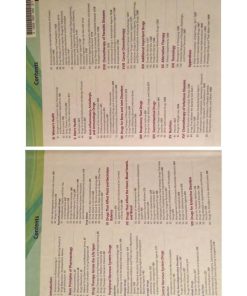Lehne’s Pharmacology for Nursing Care 10th edition by Jacqueline Burchum, Laura Rosenthal ISBN 0323512275 978-0323512275
$50.00 Original price was: $50.00.$25.00Current price is: $25.00.
Authors:Burchum, Jacqueline Rosenjack; Rosenthal, Laura D. , Series:Pharmacology [51] , Author sort:Burchum, Jacqueline Rosenjack & Rosenthal, Laura D. , Languages:Languages:eng , Published:Published:Jan 2019 , Publisher:Elsevier
Lehne’s Pharmacology for Nursing Care 10th edition by Jacqueline Burchum, Laura Rosenthal – Ebook PDF Instant Download/Delivery. 0323512275 978-0323512275
Full download Lehne’s Pharmacology for Nursing Care 10th edition after payment
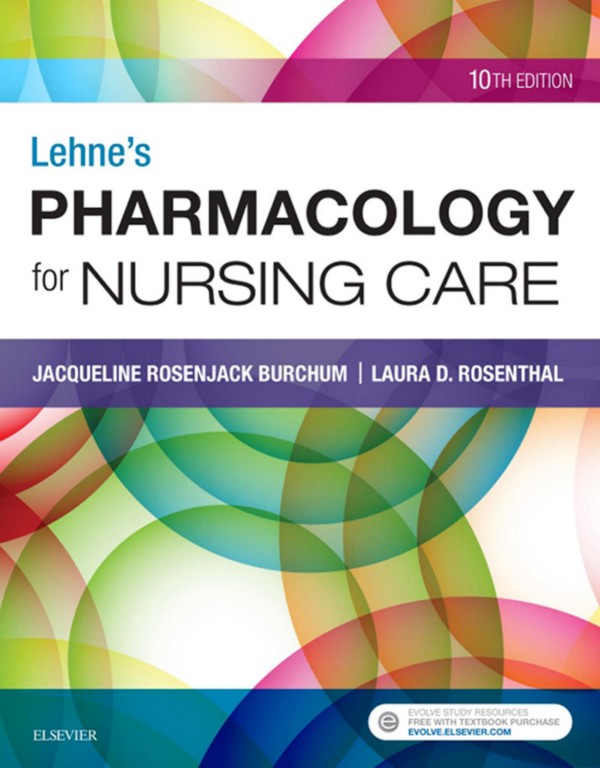
Product details:
ISBN 10: 0323512275
ISBN 13: 978-0323512275
Author: Jacqueline Burchum, Laura Rosenthal
With a clear explanation of drug prototypes and how they work, Lehne’s Pharmacology for Nursing Care, 10th Edition gives you the background you need to understand drugs currently on the market, and those not yet released. This perennial favorite of students and teachers simplifies complex concepts while distinguishing need-to-know content from the material that’s merely nice to know. The 10th edition includes updated drug content to reflect the very latest FDA approvals, withdrawals, and therapeutic uses, as well as corresponding updated nursing content. It also includes an updated prototype drugs section, summarizing their major uses, and an updated table detailing care throughout the lifespan of the patient. Additionally, each chapter ends with a nursing implications summary to help you fully understand the material and apply it to clinical nursing practice.
- Prototype Drugs features serve as a quick-reference learning aid so you can apply your understanding to related drugs currently on the market as well as drugs that will be released in the future.
- UNIQUE! Engaging writing style with clear explanations makes difficult pharmacology concepts easy to grasp and even enjoyable to learn.
- Nursing implications of drug therapy are integrated throughout the text to reinforce the integral relationship between drug therapy and nursing care.
- UPDATED Special Interest Topic boxes focus on currently trending issues in pharmacology, eliminating out-of-date content.
- Large print highlights essential, need-to-know information, and small print indicates nice-to-know information.
- QSEN focus includes Patient-Centered Care Across the Life Span featureshighlighting safe and appropriate patient care during different phases of life.
- Safety Alert features emphasize the QSEN competency relating to patient safety.
- Student-friendly features make learning easier with concise drug summary tables, chapter outlines, key points, and a visual guide to the prototype drugs in each class.
- Concise drug summary tables present detailed information for individual drugs, including drug class, generic and trade names, dosages, routes, and indications.
- Selected Canadian drug names are indicated with a maple-leaf icon throughout the text.
- Separate Bioterrorism chapter discusses the clinical manifestations and treatment of biological weapon attacks.
- NEW! Thoroughly updated drug content reflects the very latest FDA drug approvals, withdrawals, and therapeutic uses, as well as corresponding updated nursing content
- NEW! Additional images included to accompany difficult concepts.
- NEW! Inclusion of more student practice questions provide additional help for learning the material.
Lehne’s Pharmacology for Nursing Care 10th Table of contents:
- Introduction to Pharmacology for Nurses
- Overview of pharmacology and its role in nursing
- The drug development process
- Pharmacokinetics and pharmacodynamics explained in a clinical context
- Nursing responsibilities in medication administration
- Pharmacokinetics and Pharmacodynamics
- Absorption, distribution, metabolism, and excretion of drugs (ADME)
- Mechanisms of drug action
- Factors affecting drug effectiveness (age, weight, gender, genetics)
- Therapeutic and toxic drug levels
- Drug Receptors and Drug Responses
- Types of drug receptors (agonists, antagonists)
- Dose-response relationships and therapeutic indices
- Drug interactions and their effects on drug action
- Medication Administration and Patient Safety
- Routes of drug administration (oral, parenteral, topical)
- Calculating drug dosages and understanding drug orders
- The “Six Rights” of medication administration
- Preventing medication errors in nursing practice
- Central Nervous System (CNS) Drugs
- Analgesics and pain management: Opioids and non-opioid analgesics
- Drugs for anxiety, depression, and insomnia
- Antipsychotics and mood stabilizers
- Antiepileptic drugs (AEDs) and their nursing considerations
- Autonomic Nervous System Drugs
- Sympathomimetics and sympatholytics (adrenergic and antiadrenergic drugs)
- Parasympathomimetics and parasympatholytics (cholinergic and anticholinergic drugs)
- Drugs for hypertension, arrhythmias, and heart failure
- Cardiovascular Pharmacology
- Antihypertensive drugs: Diuretics, ACE inhibitors, beta-blockers
- Drugs for heart failure and myocardial infarction
- Anticoagulants, antiplatelet drugs, and fibrinolytics
- Lipid-lowering drugs (statins, fibrates)
- Endocrine System Pharmacology
- Insulin and oral hypoglycemic agents for diabetes management
- Thyroid hormones and antithyroid drugs
- Corticosteroids and their role in inflammation
- Hormonal therapies for reproductive health
- Gastrointestinal Pharmacology
- Antacids, proton pump inhibitors, and H2 antagonists
- Laxatives and anti-diarrheal agents
- Anti-emetics and drugs for gastrointestinal disorders
- Respiratory Pharmacology
- Bronchodilators: Beta-agonists, anticholinergics
- Drugs for asthma and chronic obstructive pulmonary disease (COPD)
- Corticosteroids and leukotriene modifiers for respiratory diseases
- Renal Pharmacology
- Diuretics: Mechanisms and nursing implications
- Drugs used in the treatment of kidney failure and electrolyte imbalances
- Drugs for urinary tract infections (UTIs)
- Infection Control and Pharmacology
- Antibiotics: Classes, mechanisms of action, and nursing implications
- Antivirals, antifungals, and antiprotozoals
- Vaccines and immunization protocols
- Drugs Affecting the Immune System
- Immunosuppressants: Corticosteroids, cytotoxic agents
- Biological agents and monoclonal antibodies
- Vaccination schedules and patient education
- Cancer Pharmacology
- Chemotherapy agents: Classes and mechanisms of action
- Targeted therapies and immunotherapy in cancer treatment
- Nursing considerations for patients undergoing cancer treatment
- Pharmacology of Pain Management
- Nonsteroidal anti-inflammatory drugs (NSAIDs)
- Opioid analgesics: Administration, monitoring, and side effects
- Non-pharmacologic pain management strategies
- Psychopharmacology
- Drugs used in the treatment of mental health disorders
- Antidepressants: SSRIs, SNRIs, tricyclics
- Antipsychotic medications: Typical vs atypical antipsychotics
- Pediatric and Geriatric Pharmacology
- Age-related changes in drug absorption, metabolism, and excretion
- Drug therapy considerations for children and older adults
- Pediatric dosing guidelines and nursing interventions
- Polypharmacy and the elderly
- Nursing Considerations in Drug Therapy
- Patient education on drug use, side effects, and compliance
- Recognizing and managing adverse drug reactions (ADRs)
- Monitoring drug therapy and assessing effectiveness
- Legal and ethical issues in pharmacology
- Pharmacology in Special Populations
- Pregnant and lactating women: Drug safety and guidelines
- Pharmacology considerations for patients with hepatic or renal impairment
- Drug therapy for patients with chronic diseases
- Pharmacovigilance and Drug Safety
- Reporting and managing adverse drug reactions (ADR)
- The role of the nurse in pharmacovigilance
- Guidelines for patient monitoring and drug safety assessment
People also search for Lehne’s Pharmacology for Nursing Care 10th:
lehne’s pharmacology for nursing care e-book
lehne’s pharmacology for nursing care
lehne’s pharmacology for nursing care study guide
richard a lehne pharmacology for nursing care
pharmacology for nursing care by richard a lehne pdf

